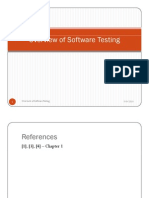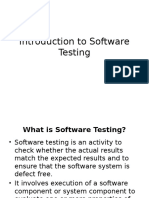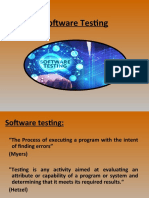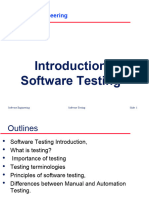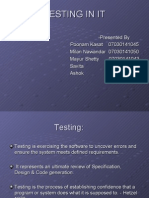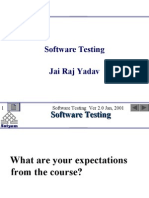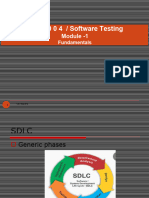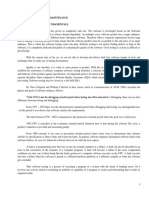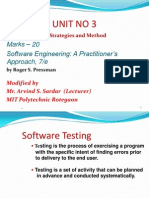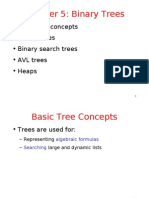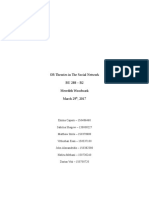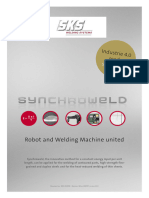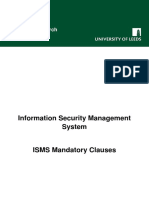0% found this document useful (0 votes)
131 views33 pagesChapter1 - Overview
The document provides an overview of key concepts in software testing, including definitions of software testing, the objectives of testing, different testing levels based on the software development life cycle, techniques for designing test cases, common principles and myths. It discusses activities performed by test engineers and managers. The overview addresses taxonomy, automation, and limitations of software testing.
Uploaded by
mrbkiterCopyright
© Attribution Non-Commercial (BY-NC)
We take content rights seriously. If you suspect this is your content, claim it here.
Available Formats
Download as PPT, PDF or read online on Scribd
0% found this document useful (0 votes)
131 views33 pagesChapter1 - Overview
The document provides an overview of key concepts in software testing, including definitions of software testing, the objectives of testing, different testing levels based on the software development life cycle, techniques for designing test cases, common principles and myths. It discusses activities performed by test engineers and managers. The overview addresses taxonomy, automation, and limitations of software testing.
Uploaded by
mrbkiterCopyright
© Attribution Non-Commercial (BY-NC)
We take content rights seriously. If you suspect this is your content, claim it here.
Available Formats
Download as PPT, PDF or read online on Scribd
/ 33
